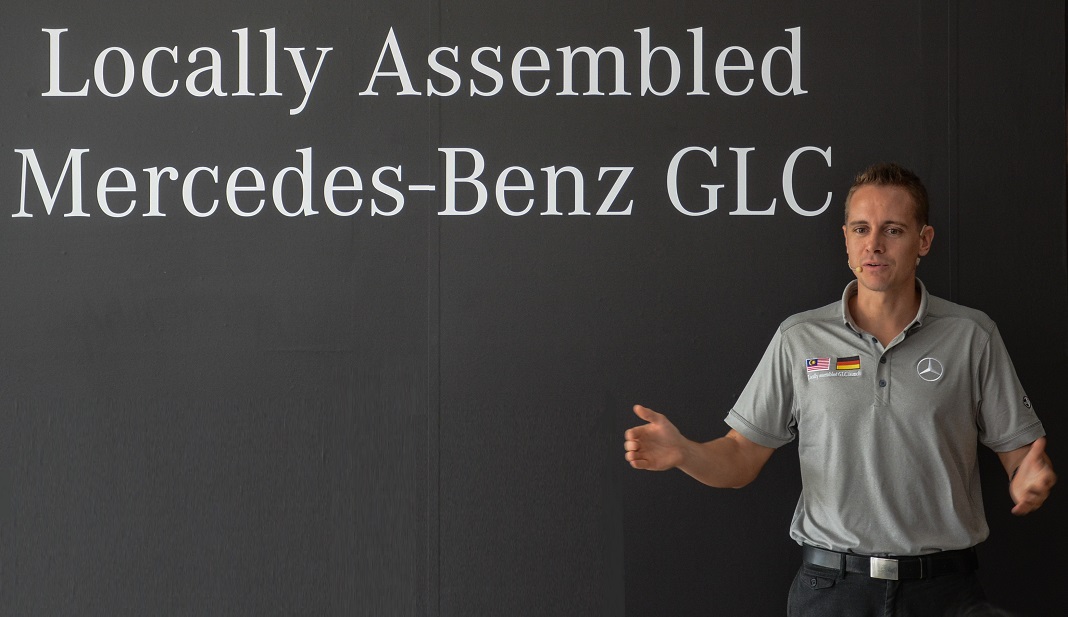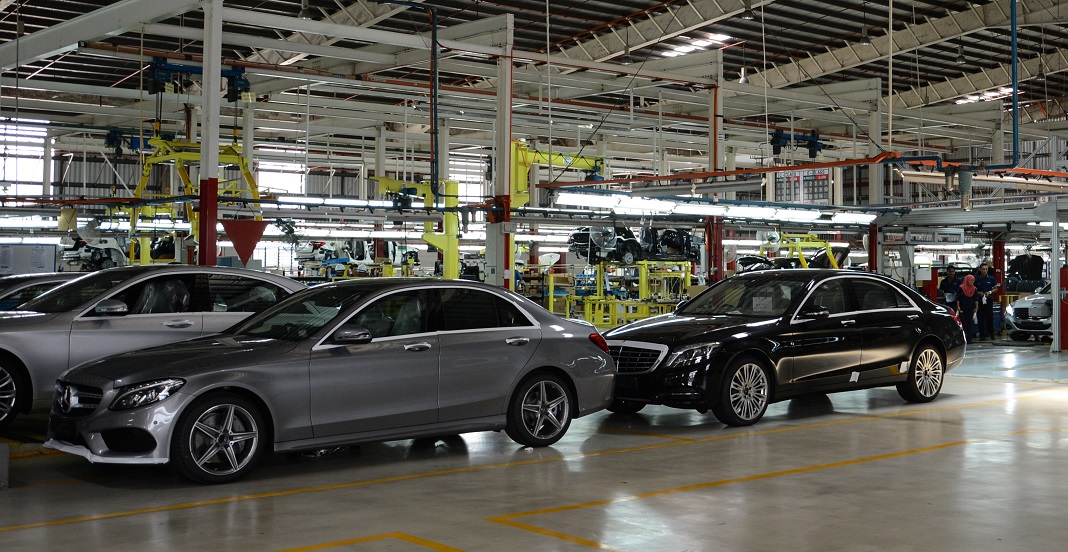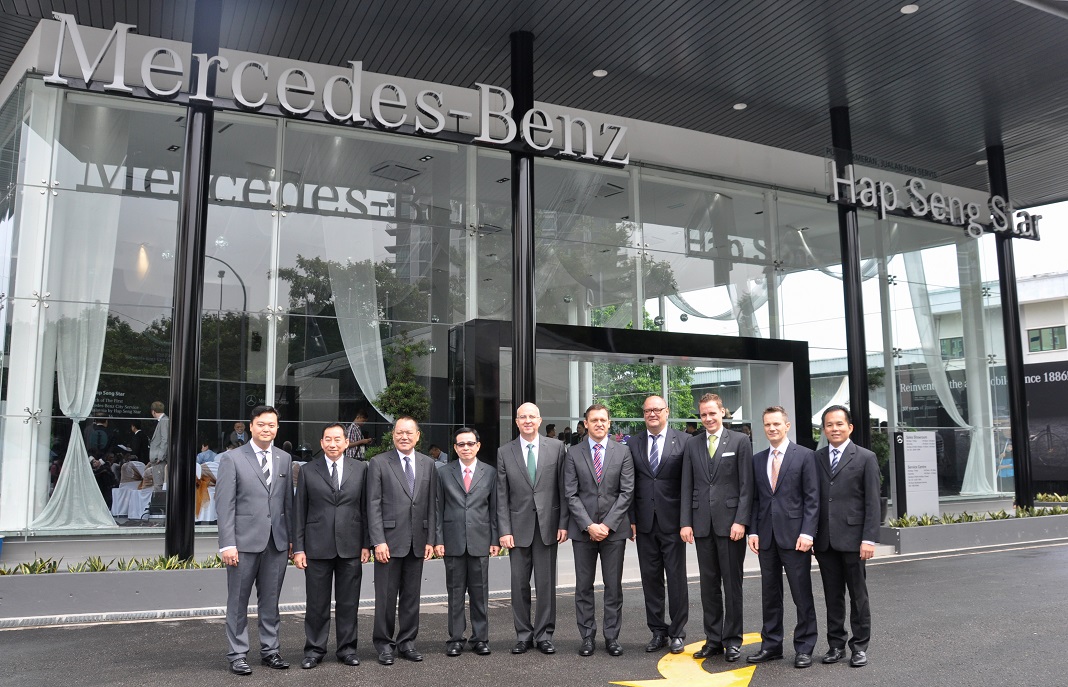
For what seemed like time immemorial, Mercedes-Benz was the undisputed ‘number one’ ever since people started counting luxury car sales. The three-pointed star reigned for decades before finally being caught and passed by BMW in 2005 (globally), with Audi sneaking into second spot from 2011 to 2014. Hard to believe, but it has been a decade since Mercedes-Benz led.
There’s a high probability that will change in 2016. The numbers (up till August) are showing a healthy lead for Mercedes-Benz over its nemesis (1.32 million units against 1.28 million), and while both brands are hitting record sales yet again, Mercedes-Benz has had the higher growth in the recent past. In Malaysia, Mercedes-Benz surpassed BMW in 2015 with a record total of 11,000 units sold – the first luxury car brand ever to breach the 10,000 mark.

We sat down recently with Mark Raine, the Vice President of Marketing & Sales of Mercedes-Benz Malaysia, not so much to flatter any egos or to churn out a puff piece, but to comprehend the mindset of a company that lost its mojo but is now on the verge of regaining a long lost crown. Despite nursing a cold and putting his dinner on hold, the ever ebullient Raine fielded our questions (and tolerated some nosy ones). So here are the edited excerpts.
Well, it looks like Mercedes-Benz will end 2016 at the top, finally.
I don’t want to appear overly optimistic, but year to date we are around 40,000 units ahead of our rival from Munich, so there’s a realistic chance we’ll end up on top. We are all fighting a battle, and we are on a good run. This comparison is important to us.
What does it mean in the local context, to be back on top?
It is completely important to implant a can-do attitude and a winning mentality that says ‘we need to be on top’. It is crucial that this mentality lives within our organisation and also throughout the dealer network. Each and every one of us needs to believe that Mercedes-Benz is the best premium brand, and that we have superior products.
In superior products you mean…?
In how we shape and equip our cars. Say in the case of the GLC250, we decided that we needed to have the AMG package with 20-inch rims, panoramic sunroof, Burmester surround sound system because we want to be the premium market leader. It isn’t just about having a product edge and selling more cars, but also about image and perception, customer satisfaction, network coverage…we need to be the premium market leader in every aspect, in every segment and on all levels.
Yes, it’s an ambition that we’ll probably never ever fulfill by a hundred percent, but living that ambition, being hungry and driving that mission is a key aspect for me. The worst thing we could do now is to grow complacent and arrogant, so the tone from the top must be a right one and that everyone representing Mercedes-Benz hears that and work towards the long-term, sustainable success of the brand.

What has changed in Malaysia?
We have managed to reshaped the brand perception and rejuvenated the brand with the four distinct product groups we’ve introduced; compact cars, limousines, SUVs and dream cars. The compact car range (A, B, CLA and GLA class) and the accompanying Urban Hunting Campaign isn’t just about short term sales success but a shift in brand perception. It is part of an overall strategy that comprises many building blocks to establish a premium market leadership, adapted to suit the Malaysian market. Having a local element in everything we do is equally important.
For example, just applying the Urban Hunting Campaign to our loyal customers who have purchased our vehicles over decades would be silly, so we cater to our customer groups differently based on what appeals to them.

Are there weaknesses that need addressing?
I would be arrogant, complacent and lying to you if I were to say ‘no’. We benchmark ourselves not just against our competitors but also against other markets and non-automotive industries. Last year, we took our dealers on a field trip to the United Kingdom (before the Frankfurt Motor Show) to participate in a best practice exchange and to observe the level of professionalism in a highly competitive market. There is a need to constantly improve ourselves. While we had planned for strong growth in the last two years, again I would be lying if I were to say we knew we were going to sell 11,000 cars in 2015 and be on target to exceed that for 2016.
Electrification is very real, so where is Mercedes-Benz heading on this front?
The product portfolio is going to be different, hybrids and plug-ins are already here and battery electric vehicles such as the B-Class Electric Drive will be a complete game-changer.

Do you think Malaysian consumers are ready for EVs?
Whether Malaysian consumers are ready or not is totally irrelevant if you don’t have the infrastructure, investments, policies and guidelines. Yes, Malaysia is a few steps ahead in terms of incentivising local production of hybrids, but when moving to electric vehicles, you are looking at the need to have a charging network. Building charging infrastructure isn’t the core business of a car manufacturer, it has to be facilitated and steered by the government.
So what do you want to see in terms of policies from the government?
We want a long term, consistent approach because that would help us as a global corporation and investor in Malaysia. We engage the government consistently but a stable policy would enable car companies to respond and execute plans. Global companies tend to shy away when there are too many unknowns and risks, so a fair and level playing field is also essential.

Mercedes-Benz Malaysia has benefited from the current policies in terms of the number of cars sold, particularly the E300 Hybrid and the S400 Hybrid. What do you have to say with regards to the view that only the wealthy can afford these cars?
We were quick to capitalize on the incentives, the policy doesn’t say that Toyota or Isuzu can’t do the same. What most people see is only the purchasing element when in fact the whole country benefits because the policy is driving up revenues, turnover and jobs along the chain. For example, our plant at Pekan is running on two shifts, we educate and invest not just in the infrastructure but also in the people who are involved in putting Mercedes-Benz cars together. We are also generating expertise in the production, servicing and the supply of parts for hybrid vehicles.

